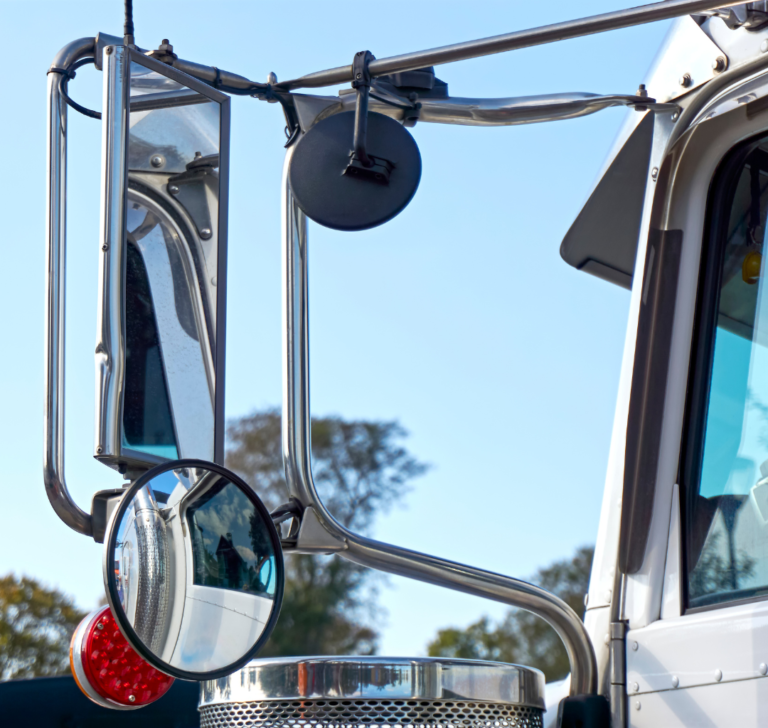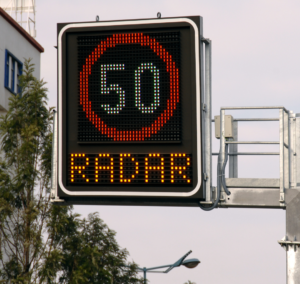It's crucial to do everything possible to avoid remaining in these blind spots to minimize any potential danger
Driving a truck requires caution, but it’s also crucial to take safety measures when sharing the road with one. Surprisingly, many drivers are unaware of these precautions. Records indicate that a significant proportion of traffic accidents involve semitrailers. Most of these incidents occur because drivers sharing the road with these vehicles are unaware of the blind spots and necessary precautions for doing so safely.
The blind spots of trucks are areas around the semitrailer where the driver’s vision is obstructed or completely blocked. Since drivers don’t have a rearview mirror, they must rely solely on side mirrors for a complete view of the road. Blind spots result from the large length and height of semitrailers. Due to these dimensions, drivers cannot see certain areas close to their vehicles and the road.

What are the blind spots of a truck?
Trucks or semitrailers have four areas where visibility is completely compromised. These blind spots are located at the front, rear, and sides of the vehicle. A key way to identify if you are driving in a truck’s blind spot is if you cannot see the driver through the rearview mirror, which means the driver cannot see you either.
Rear: it extends approximately up to 20 to 25 cars. When following a truck closely, there’s a risk of losing sight of what’s beyond the truck. If the truck brakes suddenly, this could result in accidents. It’s essential to maintain a safe distance to react appropriately in case of an emergency.
Front: due to the truck’s height, a driver of a lower vehicle doesn’t have the same frontal view as a truck driver. Therefore, when driving in front of a truck, it’s important to maintain a distance of about 4 cars to ensure that the truck driver can see you. This helps to avoid situations where the truck cannot anticipate your movements, thus reducing the risk of accidents.
Right side: the right blind spot covers the length of the trailer and extends over three lanes at a diagonal angle. When driving on the right side of a truck, maintain your speed and position so you can remain visible to the truck driver. If you need to pass the truck, do so quickly and safely, avoiding staying in its blind spot for too long and never merge from this side.
Left side: when driving on the left side of the truck, it’s safer to pass it and merge. However, it’s crucial to remember that if you cannot see the driver’s face in the side mirrors, the truck driver likely cannot see you either. Keep this consideration in mind to ensure your safety when driving near trucks on the road.

How to safely pass a truck?
To avoid a truck’s blind spots, it’s essential to do so cautiously. Merging into traffic with a truck requires extra caution and knowledge of certain rules to do so without causing accidents. It’s essential to maintain a safe distance, signal properly, and wait for the right moment to merge. Here are some key points to maintain safety:
- Ensure you can see the driver in the mirrors
- Make clear signals
- Position yourself in the left lane and accelerate to pass the truck
- Change lanes only when you can see both pairs of the truck’s headlights in the rearview mirror
- Important: Never pass on the right lane
If a truck passes you on the right side, reduce speed and wait for it to pass to exit its blind spot. Sometimes it can be difficult to avoid entering a semitrailer’s blind spot; however, it’s crucial to do everything possible to avoid remaining in these blind spots to minimize any potential danger. Maintain a safe distance, and if possible, pass the truck quickly and safely to avoid staying in its blind spot for too long.

State legislations review on speed cameras and red light cameras
States continue to review regulations regarding speed cameras and red light cameras State legislators nationwide continue to review regulations regarding speed cameras and red light

Mothers and truckers: the challenges of being a mother on the road
The biggest challenge lies in the need to care for and provide for the children at the same time Long hours of work, complete dedication,

The deadly consequences of not wearing seatbelts among truck drivers
Seven out of ten truck drivers involved in fatal accidents were not wearing seatbelts During an annual research forum, the FMCSA presented the latest data

Drivers could face license suspension if RTD process is not completed
163,318 holders of CDL and CLP licenses are registered as “prohibited” The latest FMCSA report reveals that 163,318 holders of CDL and CLP licenses are

International Roadcheck: what you need to know about DOT Week 2024
From Tuesday, May 14 to Thursday, May 16, 2024, the International Commercial Vehicle Safety Alliance’s DOT Week 2024 will be held at the International DOT

Marijuana reclassification: implications for CDL drivers and public safety
It seeks to reclassify marijuana from Schedule I to Schedule III, how does this affect shippers? The Biden Administration seeks to reclassify marijuana from Schedule
